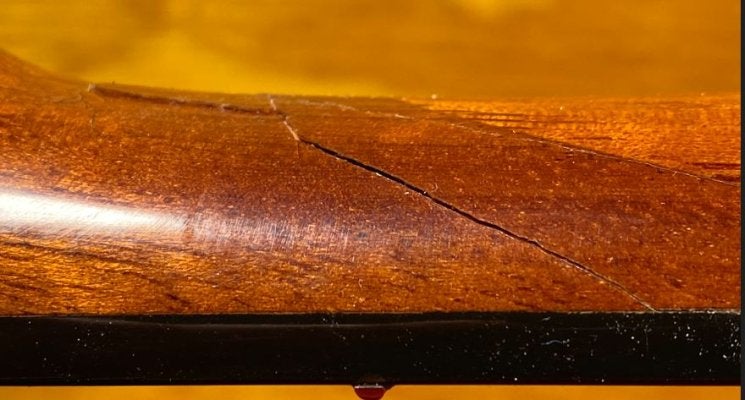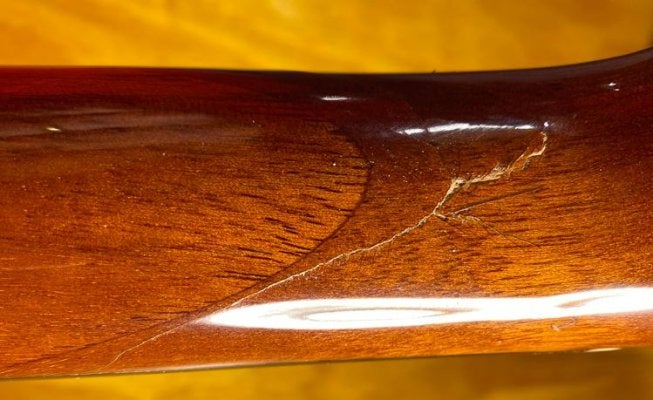I searched the threads here for a post like this and I didn't see one. However, if you are aware of one, please point me to it. A friend has an old guitar (Fender DG-7) that he said isn't worth the $ to repair but he said if I wanted to try to repair it I could since I am trying to learn guitar repair. The guitar is actually in good shape other than the crack. I would like to fix it so he can have a travel guitar.
My initial thought was to use Tite-bond wood glue based on the articles I have read here. When I look at the cracks though I am trying to figure out how to get it all in. Would it be better to use water thin CA glue? I really don't want to spread the crack open as that in my mind would hurt it more. I have pictures below.
My question to all is, which glue approach would you use to fix this?
My initial thought was to use Tite-bond wood glue based on the articles I have read here. When I look at the cracks though I am trying to figure out how to get it all in. Would it be better to use water thin CA glue? I really don't want to spread the crack open as that in my mind would hurt it more. I have pictures below.
My question to all is, which glue approach would you use to fix this?




